-
Posts
12444 -
Joined
-
Last visited
-
Days Won
554
Content Type
Profiles
Forums
Events
Everything posted by Fiery
-

fixed: AIDA64 doesn't show voltage values, except CPU (ASRock B250 Pro4)
Fiery replied to viestell's topic in Bug reports
Thank you for your feedback -
1) What motherboard and CPU do you have? 2) Are you running the latest AIDA64 version of 6.00?
-
Okay. So you don't want us to directly handle the display and take over the whole screen. That's fine, although not ideal for many users. Your solution would be more versatile if it had the mode you've described as well as allow (unlock) 3rd party software like AIDA64 to talk to the screen directly. If you implement an ID or some other information in the USB identification block, then you can let software know what screen and what protocol should they expect to be connected to your PCB. Also, it may be possible to come up with a smart microcontroller that can handle multiple displays, and can provide system information (detailed information on the connected display) to 3rd party software. When it comes to pushing the hardware monitoring information to the virtual COM port, do you think a similar format that we already use for Shared Memory would be suitable for your microcontroller to process? An example output for the shared memory content: <sys><id>SDATE</id><label>Date</label><value>2019. 07. 24.</value></sys><temp><id>TMOBO</id><label>Motherboard</label><value>37.00</value></temp><temp><id>TCPU</id><label>CPU</label><value>29.00</value></temp><temp><id>TCPUPKG</id><label>CPU Package</label><value>31.00</value></temp><temp><id>TCPUIAC</id><label>CPU IA Cores</label><value>31.00</value></temp><temp><id>TCPUGTC</id><label>CPU GT Cores</label><value>30.00</value></temp><temp><id>TCC-1-1</id><label>CPU Core #1</label><value>31.00</value></temp><temp><id>TCC-1-2</id><label>CPU Core #2</label><value>32.00</value></temp><temp><id>TCC-1-3</id><label>CPU Core #3</label><value>31.00</value></temp><temp><id>TCC-1-4</id><label>CPU Core #4</label><value>26.00</value></temp><temp><id>TDIMMTS1</id><label>DIMM1</label><value>30.75</value></temp><temp><id>TDIMMTS2</id><label>DIMM2</label><value>31.25</value></temp><temp><id>TDIMMTS3</id><label>DIMM3</label><value>31.50</value></temp><temp><id>TDIMMTS4</id><label>DIMM4</label><value>31.25</value></temp><temp><id>THDD1</id><label>INTEL SSDPEDMW400G4</label><value>34.00</value></temp><temp><id>THDD2</id><label>ST8000DM004-2CX188</label><value>34.00</value></temp><temp><id>THDD3</id><label>Samsung SSD 850 EVO 1TB</label><value>24.00</value></temp><temp><id>THDD4</id><label>SAMSUNG SSD 830 Series</label><value>29.00</value></temp><fan><id>FCPU</id><label>CPU</label><value>708</value></fan><volt><id>VCPU</id><label>CPU Core</label><value>0.696</value></volt><volt><id>VCPUVID</id><label>CPU VID</label><value>0.871</value></volt><volt><id>V33V</id><label>+3.3 V</label><value>3.324</value></volt><volt><id>VP5V</id><label>+5 V</label><value>4.950</value></volt><volt><id>VP12V</id><label>+12 V</label><value>12.240</value></volt><volt><id>V3VSB</id><label>+3.3 V Standby</label><value>3.360</value></volt><volt><id>VBAT</id><label>VBAT Battery</label><value>3.072</value></volt><volt><id>VDIMM</id><label>DIMM</label><value>1.200</value></volt><volt><id>VVCCSA</id><label>VCCSA</label><value>1.068</value></volt><volt><id>VBATT</id><label>Battery</label><value>13.670</value></volt><pwr><id>PCPUPKG</id><label>CPU Package</label><value>5.03</value></pwr><pwr><id>PCPUIAC</id><label>CPU IA Cores</label><value>2.44</value></pwr><pwr><id>PCPUGTC</id><label>CPU GT Cores</label><value>0.46</value></pwr><pwr><id>PDIMM</id><label>DIMM</label><value>2.21</value></pwr>
-

Please add the ability to send data to MQTT servers
Fiery replied to sblantipodi's topic in Brainstorming
We've checked, and MQTT is quite a complicated protocol to implement from scratch. If there's a considerable demand for such a feature, then I believe it would be best if someone came up with a library that picks up AIDA64 External Applications readings from Shared Memory, Windows Registry or WMI, and send the stuff over MQTT using its own libraries and implementation. -
Why you use our app not another app for the same purpose it's completely up to you. We believe our app is the best of its kind, ie. it's the best sysinfo app for Android. We actually believe our software for Windows PCs is also the best of its category. When it comes to battery charge rate measurement, our app uses the standard Android BatteryManager API: https://developer.android.com/reference/android/os/BatteryManager You may want to double-check the readings using other Android apps as well, e.g. Ampere.
-

please add "lock panel" option to sensor panel context menu
Fiery replied to stillwater's topic in Brainstorming
We will add the requested right-click context menu option for the SensorPanel in the next AIDA64 beta update. -
Please rephrase the question or explain it in more details.
-

fixed: SMART data from LSI 9305-24i SGL( WIndows 7 )
Fiery replied to sound0711's topic in Hardware monitoring
Thank you for your feedback -
We'd be happy to implement your display protocol in AIDA64. But in order to do so, we need more information: 1) Is it going to be an alphanumeric display or a graphical one? 2) What is the resolution of the display you attach to your PCB? 3) Are there display options, or your PCB can only handle a single kind of display? 4) Do you prefer AIDA64 to communicate with the display in the most direct way possible (LibUSB or HID), or it's adequate to handle the Virtual COM port at whatever baud rate it's configured for? 5) Do you have a protocol specification ready? 6) Can you ship 2 (two) fully assembled modules (PCB + OLED display as shown on your second photo) if we reimburse your full costs, including parts and shipping? I'm afraid we cannot fly to Nanjing now 7) Do you have a name for the protocol or for the device that we can refer to?
-

[Sold] ER-OLEDM032 (SSD1322) 3.2" OLED USB interface
Fiery replied to romP44's topic in Hardware monitoring
Hurry guys, those devices are great to be used with the AIDA64 LCD module to monitor sensor values! -
Thank you! Your device uses the Asetek LC protocol, the older Version 6 of it. Everything seems to be working well in terms of finding the device itself, so the problem that prevents AIDA64 from talking to the device could be that EVGA's own software has the device open and blocking concurrent access to the same device. Try to close EVGA's software and check if AIDA64 can pick up the Asetek LC device.
-
We will add a few special keys in the next AIDA64 beta update. Row key manager would be overkill for the purpose of the RGB LED module which is supposed to be an easy-to-use module.
- 64 replies
-
- BlackWidow Chroma
- LED
-
(and 8 more)
Tagged with:
-
We will add the requested option called Corsair Hydro Platinum sensor support to the AIDA64 / main menu / File / Preferences / Stability page in the next AIDA64 beta update. I'll post a message into this topic once the new beta build is available for download.
-

Why dose Aida64 open when i open Msi Afterburner
Fiery replied to J024u@ r071n's topic in General Discussion
I suppose RTSS (which may be a component of MSI Afterburner) would open AIDA64 or HWiNFO. -
That's a known limitation of AMD RAID drivers. They provide ATA passthrough and SMART information only for the first drive of the RAID array.
-
Can you please post a screenshot of Asus GPU Tweak II, showing how you can control and monitor the fans? I'm asking for that because even though both Asus Strix-RTX2080 and Asus Strix-GTX1080 seem to have the same sensor chip, somehow they seem to have a different registers layout So we're not sure how to handle them both properly.
-

fixed: Windows Defender not detected by AIDA64 Extreme
Fiery replied to Partha's topic in Bug reports
Thank you for your help and feedback! -
Please right-click on the bottom status bar of AIDA64 main window --> System Debug --> USB Dump. Copy-paste the full results into this topic, or attach the results as a TXT file to your post. You may need to enable status bar in AIDA64 / main menu / View first. Also right-click on the bottom status bar of AIDA64 main window --> Sensor Debug --> Corsair Link Dump. Copy-paste the full results into this topic, or attach the results as a TXT file to your post. Thanks, Fiery
-
Thank you for your feedback
-

fixed: SMART data from LSI 9305-24i SGL( WIndows 7 )
Fiery replied to sound0711's topic in Hardware monitoring
Please upgrade to the latest beta version of AIDA64 Extreme available at: https://www.aida64.com/downloads/latesta64xebeta After upgrading to this new version, make sure to restart Windows to finalize the upgrade. Let me know how it works. -
Please avoid posting a single issue into multiple topics. I've replied you in your other topic.
-

fixed: Windows Defender not detected by AIDA64 Extreme
Fiery replied to Partha's topic in Bug reports
Make sure to upgrade to the latest beta version of AIDA64 Engineer available at: https://www.aida64.com/downloads/latesta64eebeta After upgrading to this new version, make sure to restart Windows to finalize the upgrade. Let me know if it helps. -
Thank you. I'm afraid we couldn't reproduce the issue with our own GRID+ V3 device. So we've decided to change the GRID+ V2 option in AIDA64 / main menu / File / Preferences / Stability to apply to GRID+ V3 as well. So you can use that option to disable GRID+ V2 and V3 support altogether if it keeps working incorrectly on your system.
-
Thank you for the info. Please upgrade to the latest beta version of AIDA64 Extreme available at: https://www.aida64.com/downloads/latesta64xebeta After upgrading to this new version, make sure to restart Windows to finalize the upgrade. Let me know how it works
-
I'm glad you've managed to resolve it. In HWMonitor where can you see the WHEA error info? I've checked and I cannot find anything related to it there. Can you perhaps post a screenshot to show us what you're looking for?




